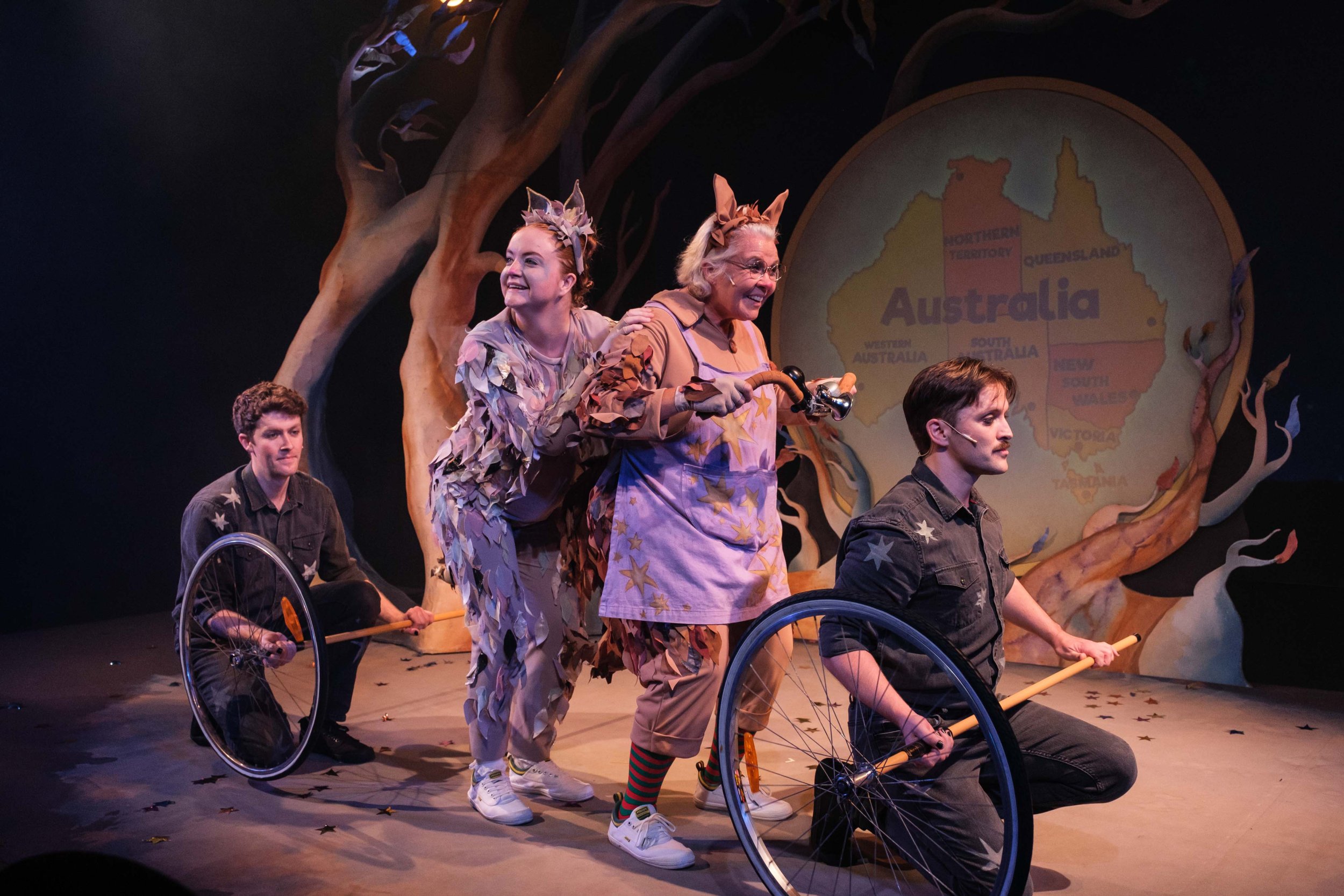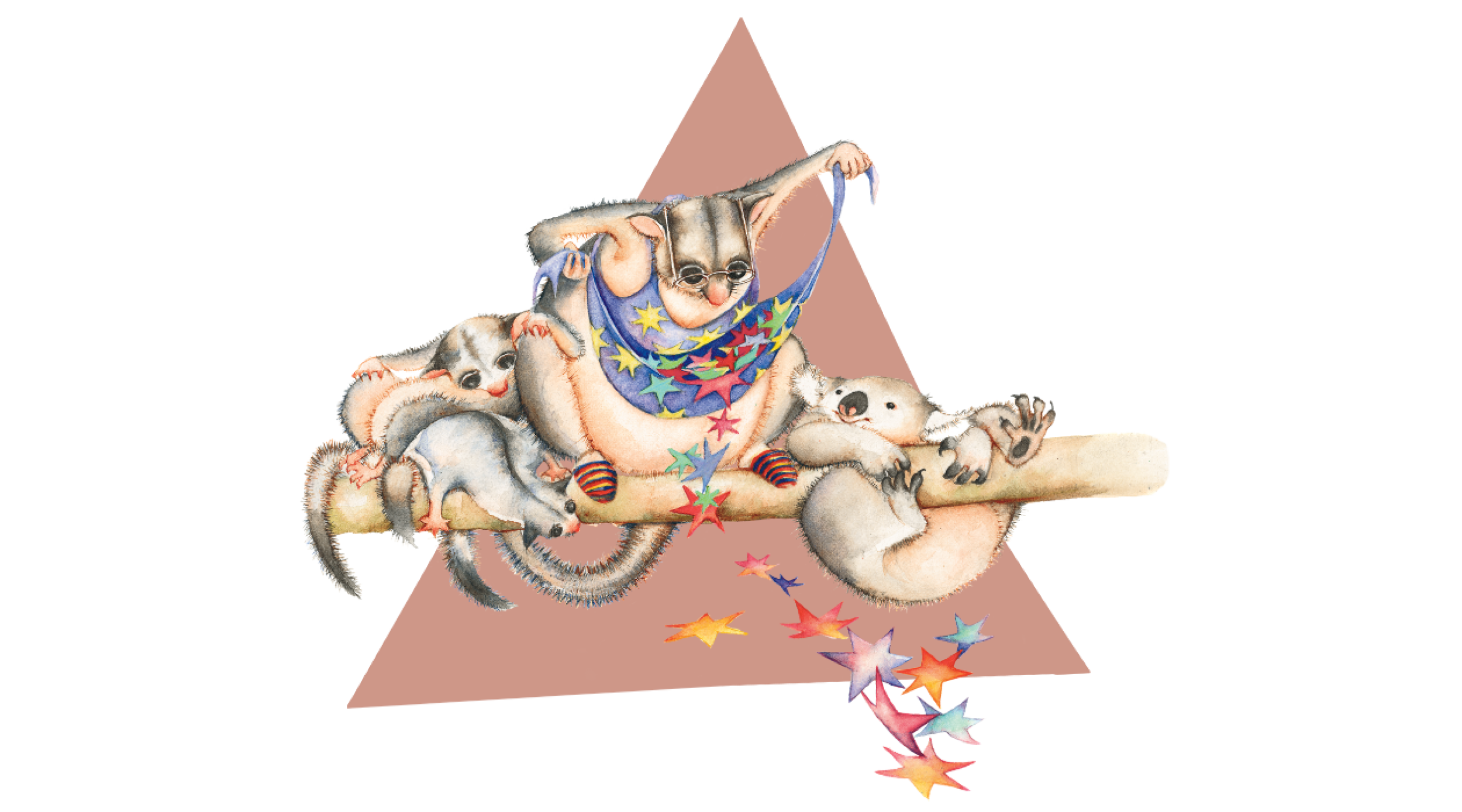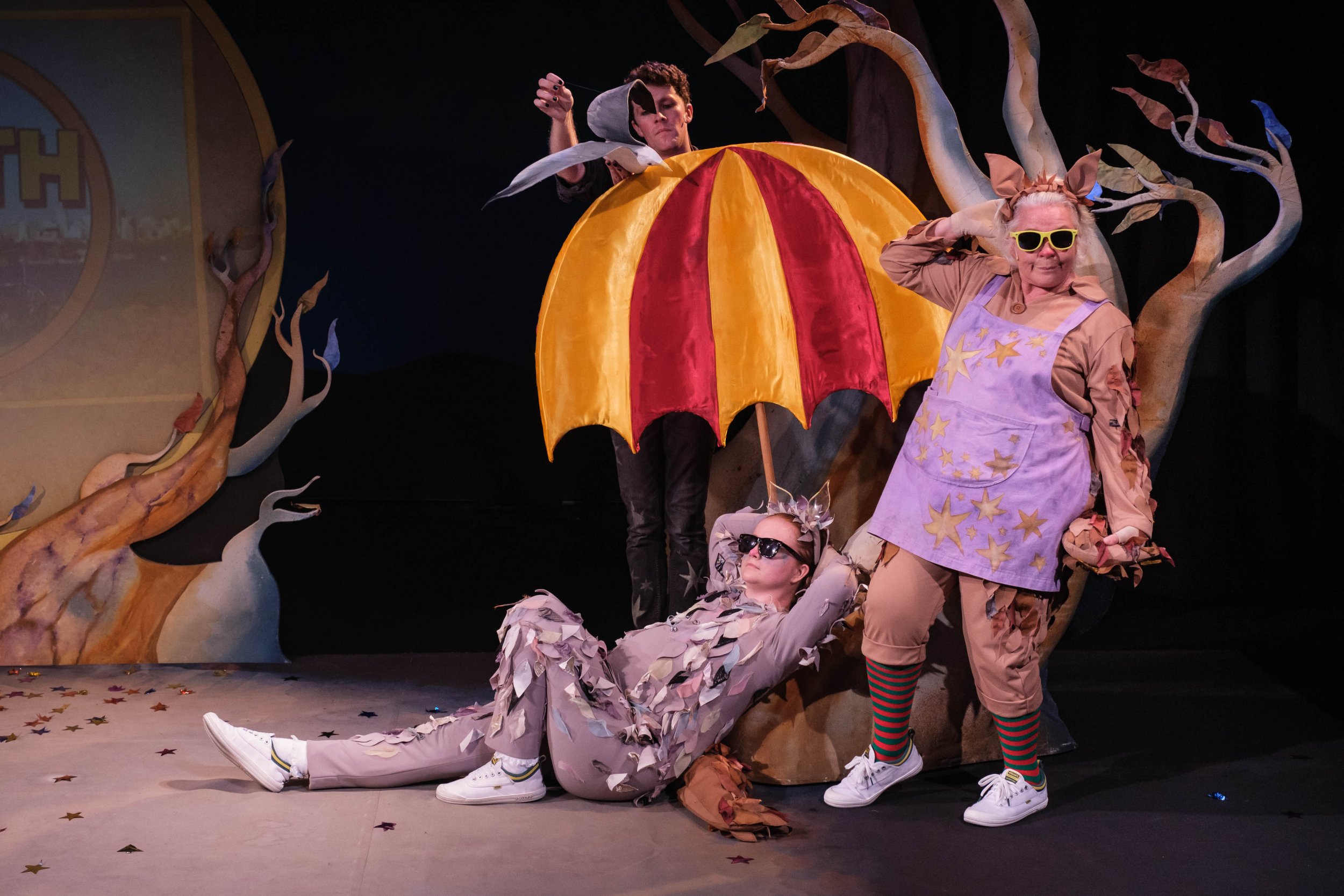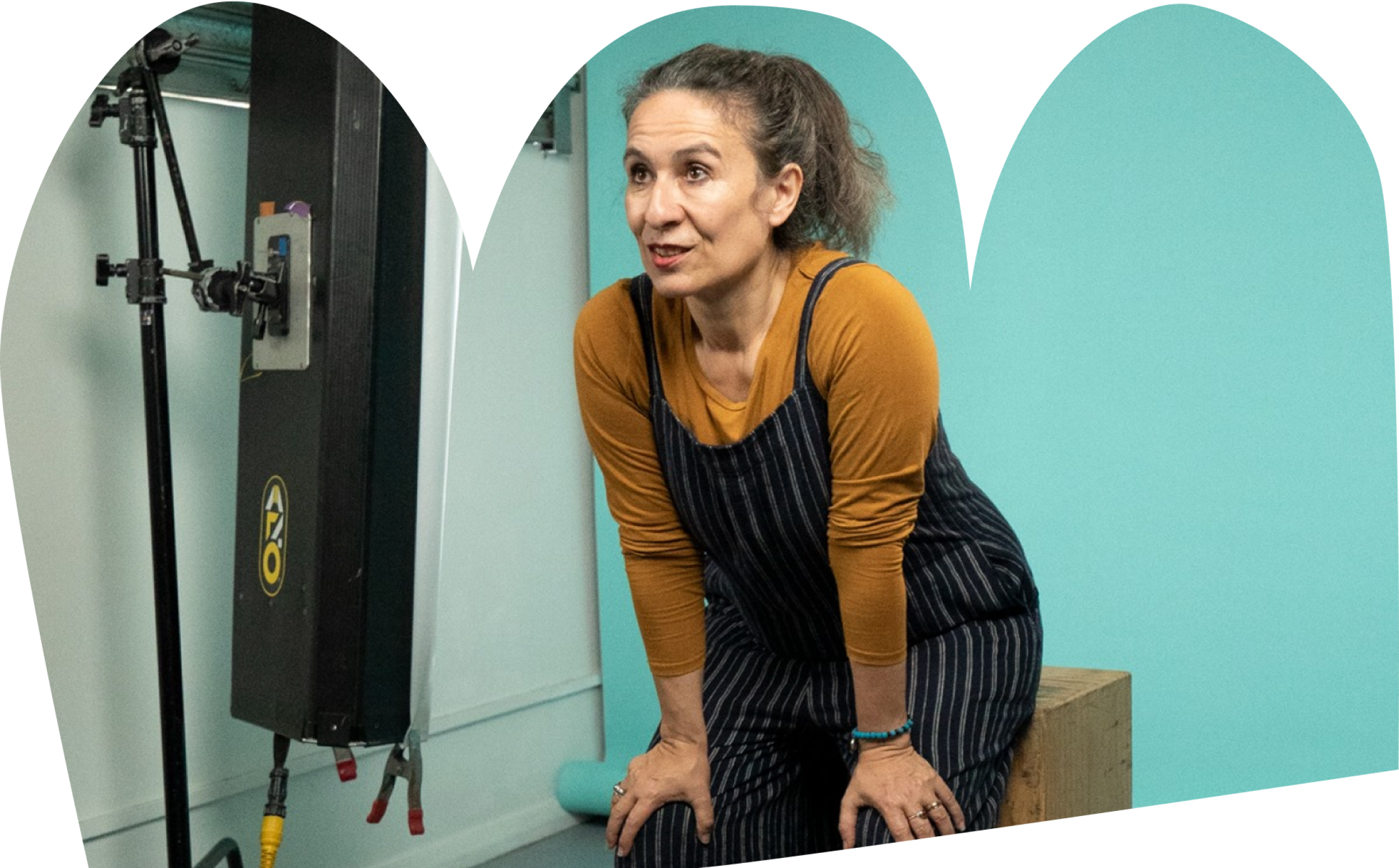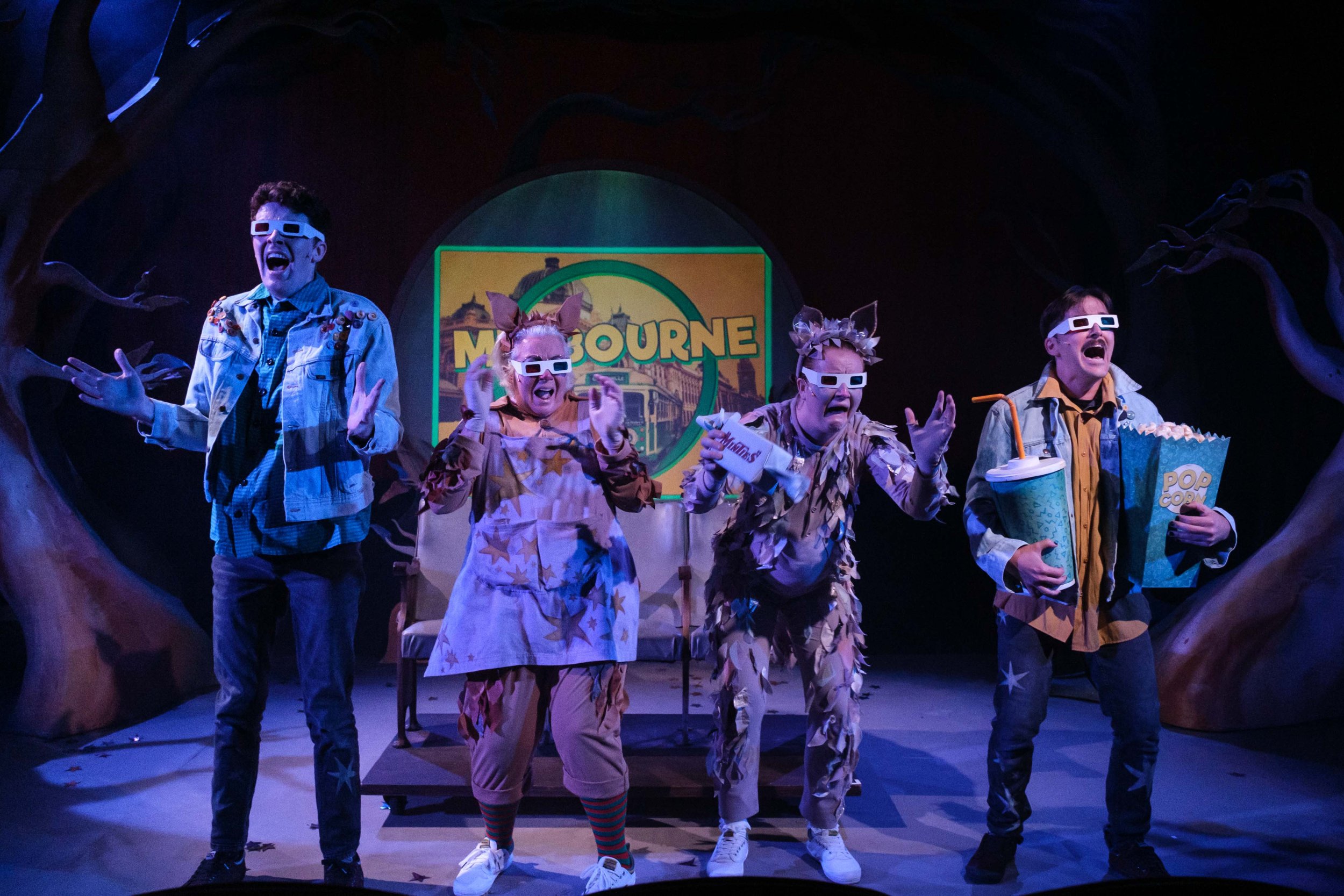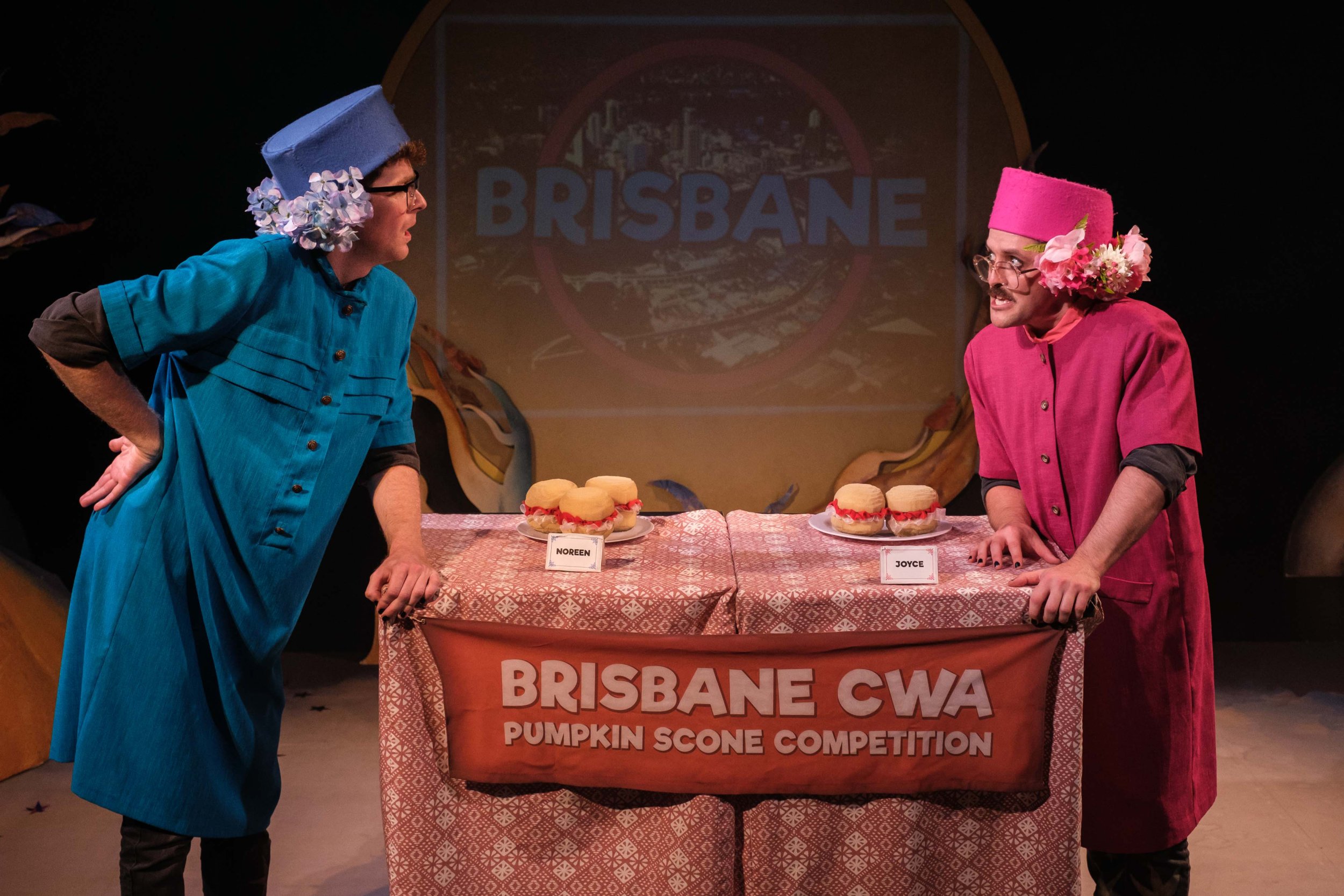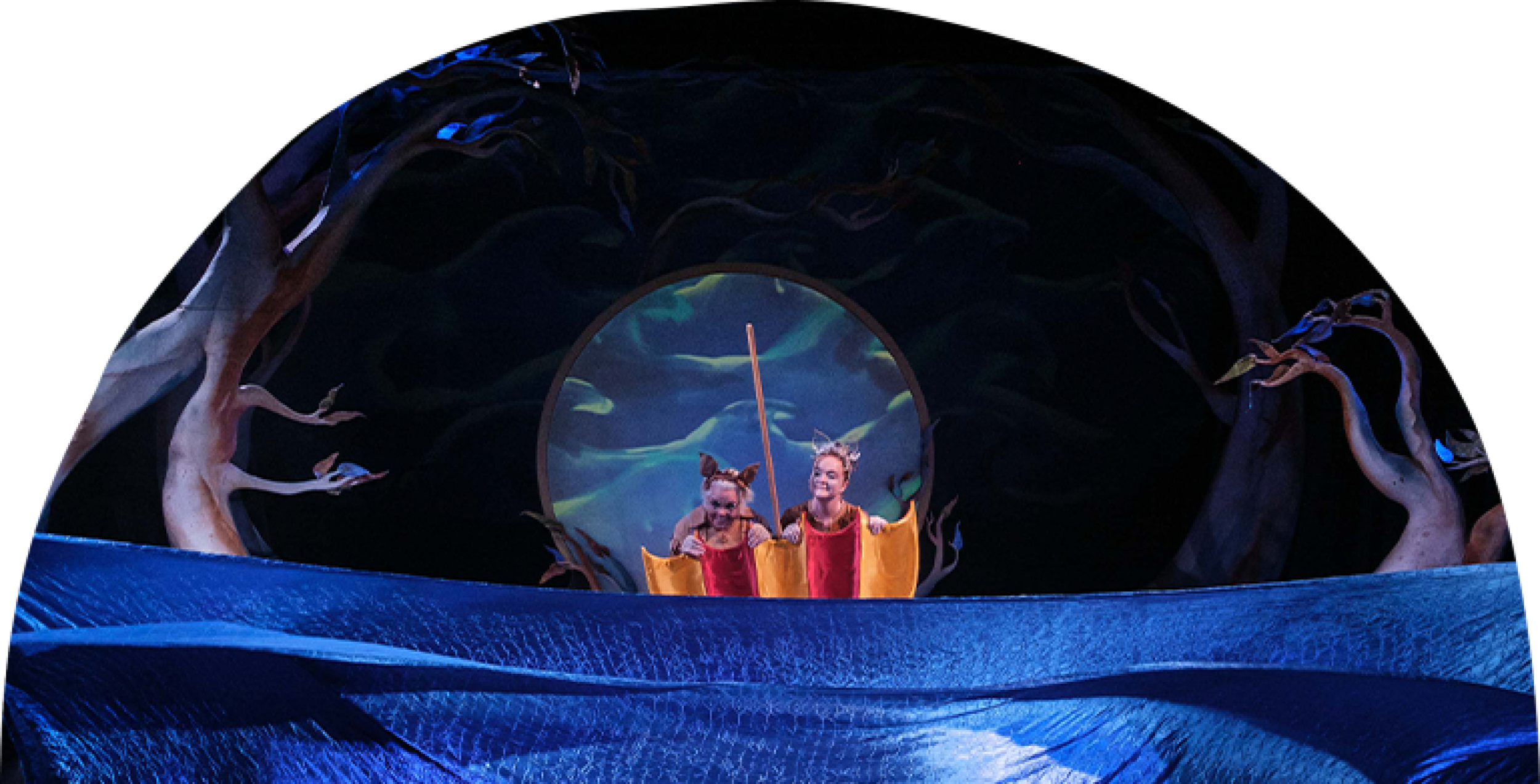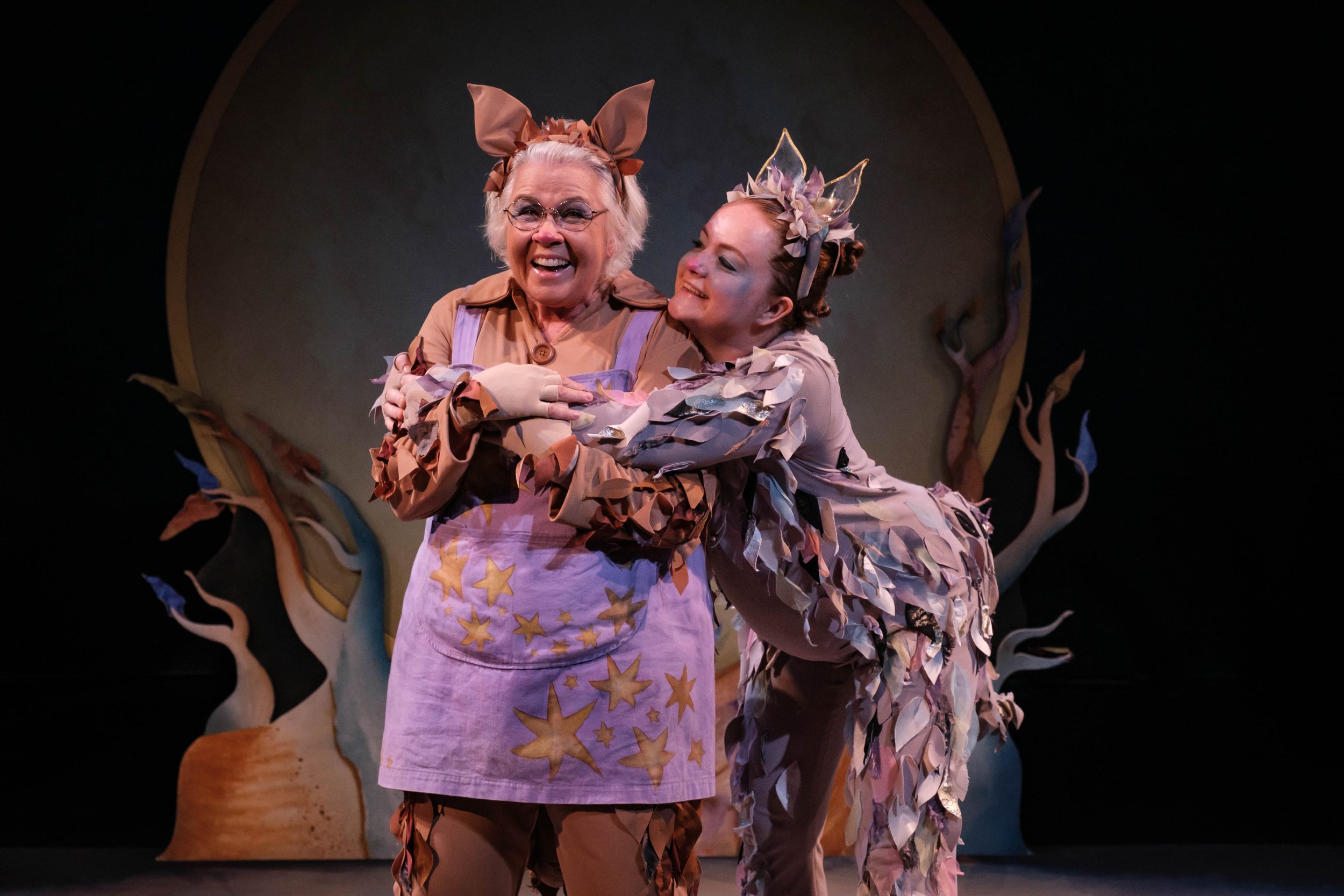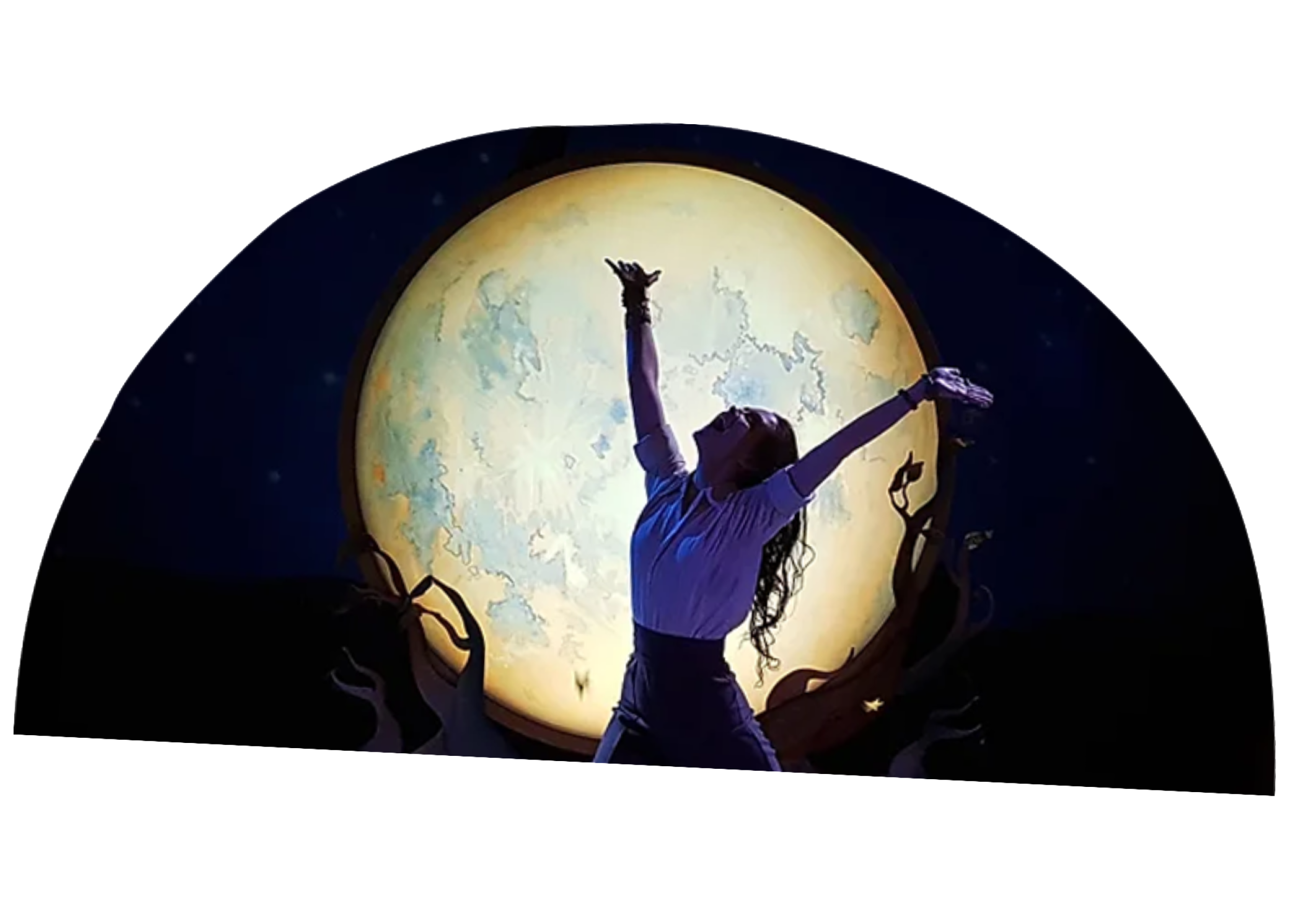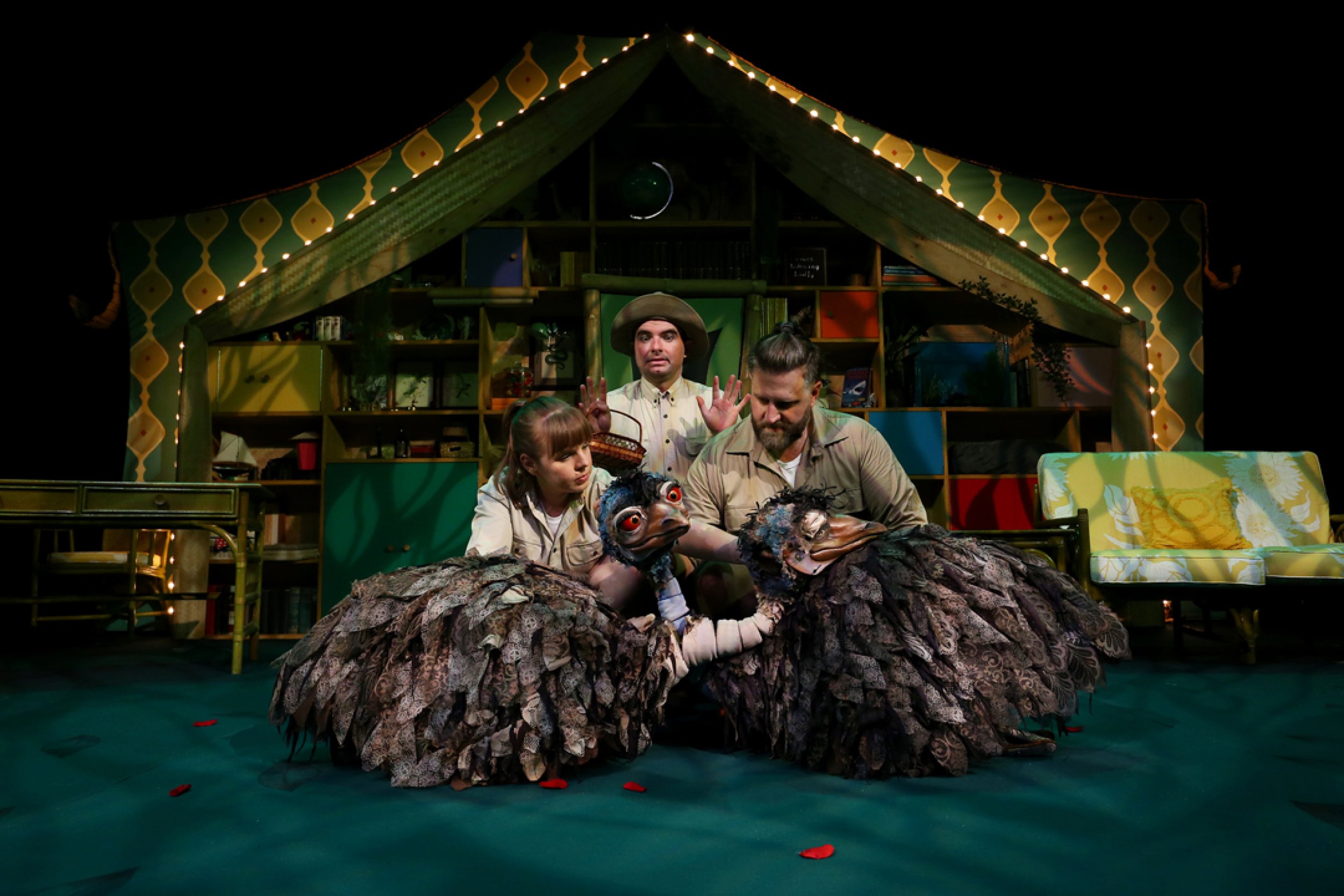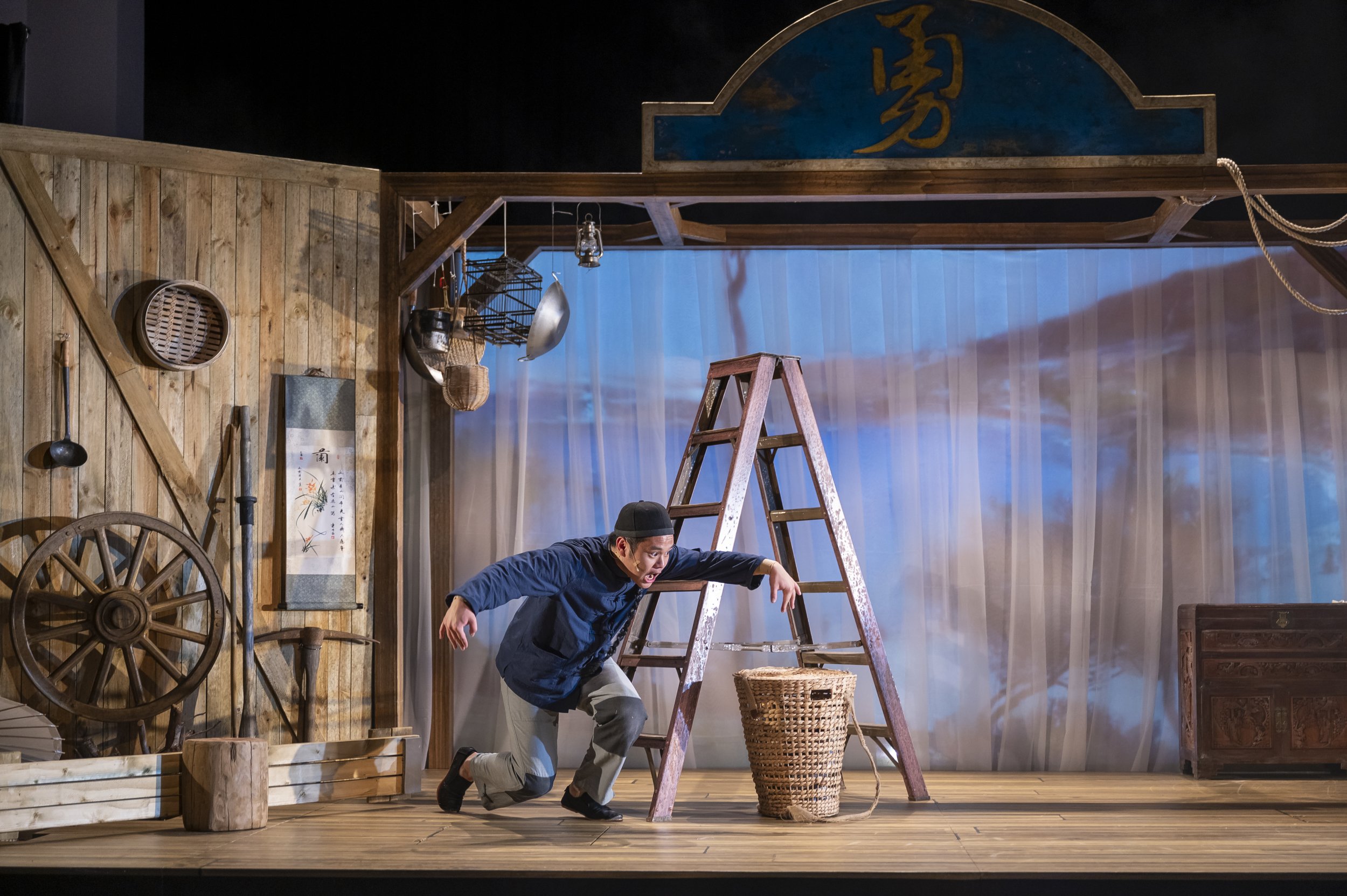Description: Students create a picture book based on the Dreamtime story: The Rainbow Snake
Resources: Paper/workbooks, pens/pencils
The Rainbow Snake:
Long long ago in the Dreamtime, a group of aboriginals were out hunting for kangaroos. It had been raining and the ground was soft making it difficult for the hunters to catch their prey. The hunters came to a clump of trees near the edge of a small plain and decided to rest in the shade. The hunters sat around resting, telling stories and warming their hands by the fire when on the horizon they saw a beautiful multi-coloured arch - a rainbow. It was the rainbow snake moving from his old waterhole to another. They were a little fearful as they did not want this huge brightly coloured serpent in a waterhole near their camp.
When the hunting party returned to their camp, the children ran out to greet them. Even though they caught only 2 kangaroos - not really enough to feed everyone - there would be singing and dancing - a big corroboree that night. During the corroboree, a young hunter went over to where the old men were sitting and asked them to tell him about the Rainbow Snake - if everyone was so fearful of him why could he not spear him then no one would fear this serpent anymore?
The old men were horrified and explained that the Rainbow Snake was one of the Dreamtime creatures who had shaped the earth. In the beginning, the earth was flat, a vast barren plain. As the Rainbow Snake wound his way across the land, the movement of his body heaped up the mountains and dug troughs for the rivers. With each new thrust of his huge multi-coloured body, a landform was created. He was the biggest of the Dreamtime Beings. At last, tired from the effort of shaping the earth, he crawled into a waterhole to be cooled and soothed and then sank out of sight. Each time the animals visited the waterhole they were careful not to disturb the Rainbow Snake, for although they could not see him, they knew he was there.
Then one day after a huge rainstorm his huge coloured body was arched up from the waterhole, over the tree-tops, up through the clouds and across the plain to another waterhole. To this day, aboriginals are careful not to disturb the Rainbow Snake as they see him going across the sky from one waterhole to another.
By Michael J Connolly
Dreamtime Kullilla-Art © Dreamtime Kullilla-Art
kullillaart.com.au
How it works: Students discuss the plot points of The Rainbow Snake, breaking the story up into four sections. Students then use 5 pages to create a picture book that tells the story of ‘How the Sun Was Made’ through pictures instead of words.
Pages:
Title page with written title: The Rainbow Snake
Paragraph 1 shown in pictures
Paragraph 2 shown in pictures
Paragraph 3 shown in pictures
Paragraph 4 shown in pictures
Students share their picture books with their classmates.
For older students:
create a comic strip based on the Dreamtime story. A comic strip is a series of drawings that tell a story through images and captions.
